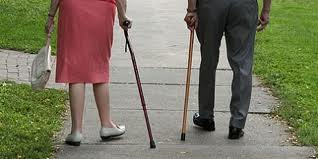What is the leading cause of blindness in Canada?
The leading cause of blindness in Canada is called Senile
Macular Degeneration (SMD) or Age-Related Macular Degeneration (AMD.) This pathology is associated with the retina.
SMD is the root cause of 33% of all cases that result in
blindness.
What happens to the eye?
SMD is a degenerative eye disease which results in the
deterioration of the macula (central part of the retina) causing the patient to
have loss of sharp central vision.
How bad can it get?
The vision directly in front of you (central vision) is
gone. The loss of vision is permanent
and irreversible.
What does a patient experience?
Damage
to the macula results in a patient having reduced colour perception and
contrast. A patient
may start to have difficulty
reading, driving and recognizing faces.
Peripheral vision remains intact, however, central vision becomes
impaired.
How long does this take?
The short answer is that it can happen very quickly or take
its time. If it progresses slowly, it
can take many years to reach a critical point.
And if it happens very quickly, a patient may experience vision loss
from as little as a few weeks to a few months.
Who does this affect?
Generally this condition affects people 55 years of age and
older. This disease affects both eyes
(bilateral) and progressively gets worse.
Given the demographics of an ageing population in Canada, the number of
people who will get this disease is expected to double in the next 25 years.
Who is at risk for getting AMD?
There are 4 factors that predisposes a patient for getting
AMD
1.
Age:
greatest risk factor as the older
a patient gets, chance of getting AMD increases
Greatly.
2.
Family History: If there is a history of AMD in your family,
your chance of acquiring the disease is increased if your parent or sibling has
had it.
3.
Gender: Studies have shown women are at a higher risk
of getting AMD.
4.
Race: Studies have shown that AMD occurs in
Caucasians more frequently than
Any other race
What
factors can you control from getting AMD?
There
are always things that are in your control that can help prevent this
disease. The following 5 factors can
help save you from this disease:
1.
Smoking: Smokers have a greater likelihood of getting
AMD—up to four times the risk
As non-smokers.
2.
Diet: Studies have shown that your diet can help
you reduce the chance of developing this disease. A diet rich in dark, green leafy vegetables
and berries can lower the risk. These
foods contain Carotenoids such as Lutein and Zeaxanthin which are healthy for
you and prevent AMD from occurring.
3.
Sunlight Exposure: Excessive exposure to the sun may cause
damage of the macula
This is caused by exposure to the
blue wavelengths in sunlight. Prevention
includes remaining in the shade, wearing a sunhat and sunglasses
4.
‘Junk’ Food: Consumption of fat found in junk food that include linoleic acid, monounsaturated oils can double the risk of getting AMD.
5.
High Blood Pressure: Hypertension has been found to be a
contributing factor of AMD.















